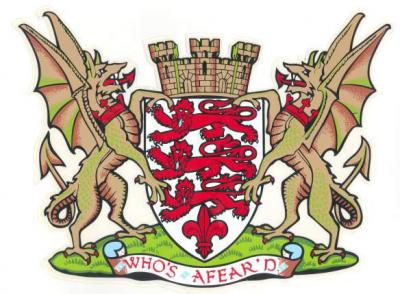The Dorset flag, a white cross edged with red on a gold background, began its existence in September 2008 following a public vote organised by the County Council.
Dorset has long had a coat of arms, depicting three striding lions and a red fleur de lys on a white background. However, when it appeared for commercial sale in 2007 the council felt bound to point out that strictly speaking this armorial banner represented only the council and not the county as a whole and that permission should be sought to use it. This prompted calls for a Dorset flag, initially rejected by the council.
Public interest in the idea continued to grow, however, and before long a full-blown campaign was running, led by Dorset residents. The council finally capitulated and in April 2008 the chairman, John Peake, asked the public to submit design ideas through the local media. Four designs were placed on a shortlist, and voting began.
The three colours of the 'Dorset Cross', red, white and gold, all have historical significance and are all found in the original coat of arms. The red and white make reference to England, while gold has long been associated with the ancient Anglo-Saxon county of Wessex, thought to have been represented by a golden dragon. The Dorset militia wore red coats with yellow facings to fight at Monmouth's uprising in 1685 and gold symbolises Dorset's agricultural heritage and golden sandy beaches.
Two of Dorset's most famous landmarks are also associated with Gold, the Golden Cap, which is the highest point on the Jurassic Coast and Gold Hill, in Shaftesbury, said to be the most photographed street in Britain.
The Dorset Cross, while remaining all-encompassing and non-denominational, also represents St Wite, whom many consider to be the patron saint of Dorset. Apart from Edward the Confessor, St Wite's are the only relics of an ancient saint in the whole of England to have survived the Reformation while remaining in their original setting, the Whitchurch Canicorum. Thus she symbolises all that is unchanging in the Dorset landscape.
- History





